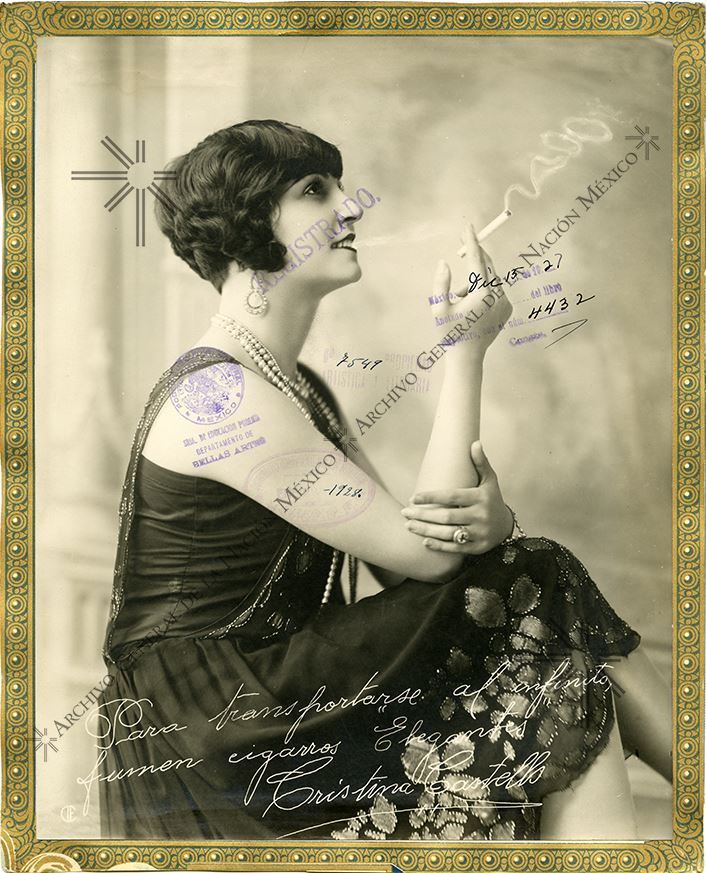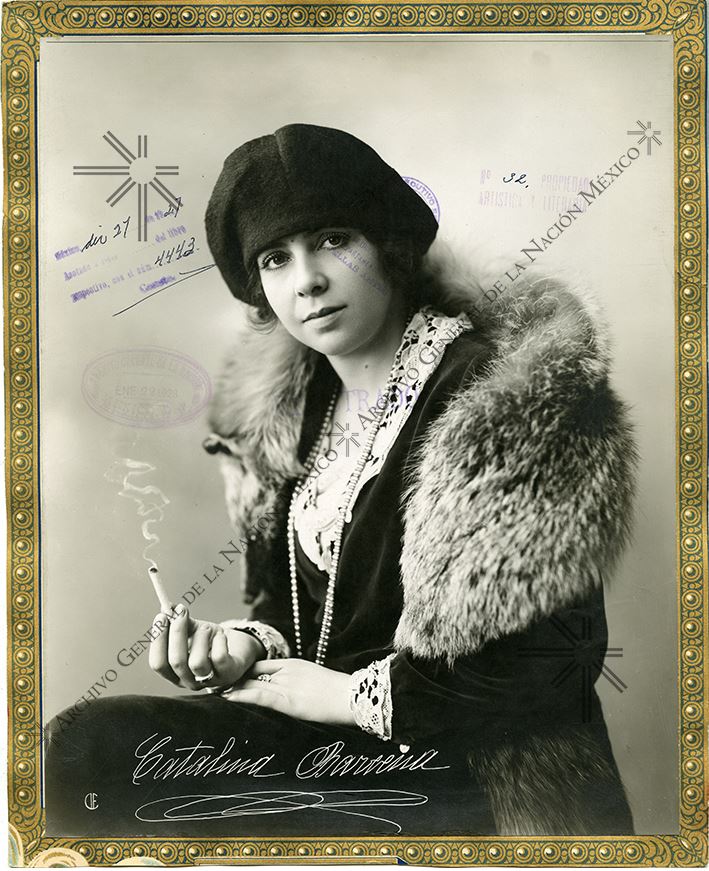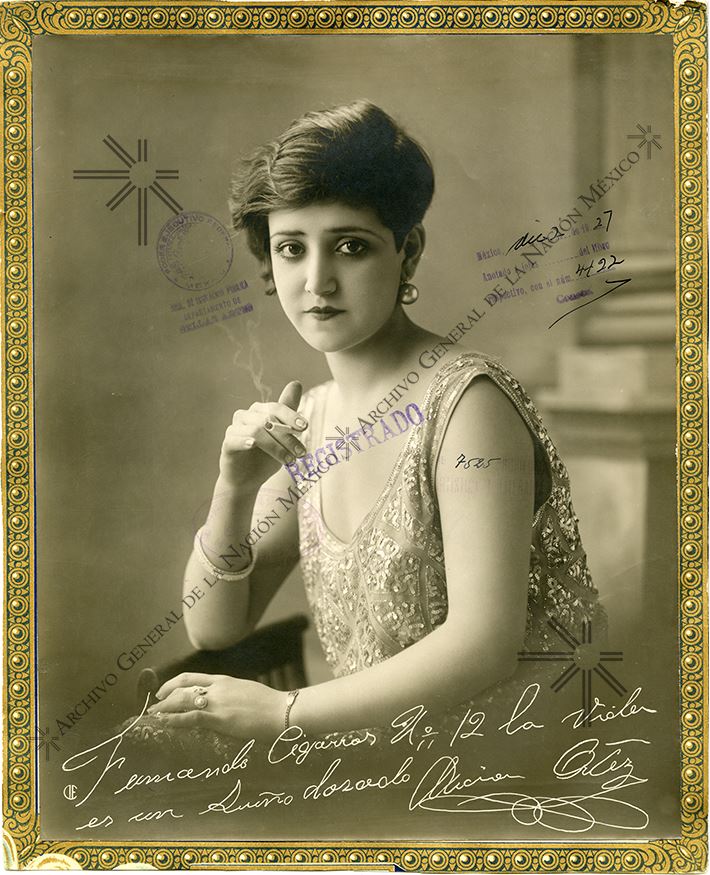Advertising in the early days of the cigar industry in Mexico through graphics
Advertising generated by the cigarette industry, which was disseminated through advertisements in national newspapers, eye-catching labels, and portraits of popular artists of the time, made cigarettes popular.
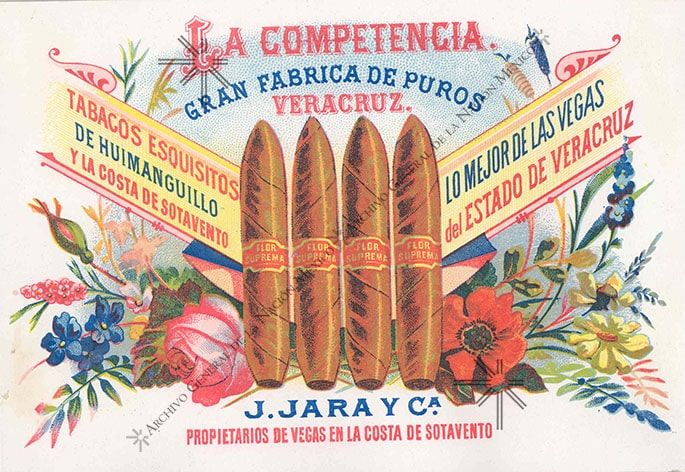
The industrialization of tobacco in Mexico by private producers brought with it the positioning of cigarettes as the main consumer product, leaving behind traditional cigars, Havana cigars, and pipe tobacco. This popularity was achieved through the publicity generated by the industries, which was disseminated through advertisements in national newspapers, eye-catching labels, and portraits of popular artists of the time.
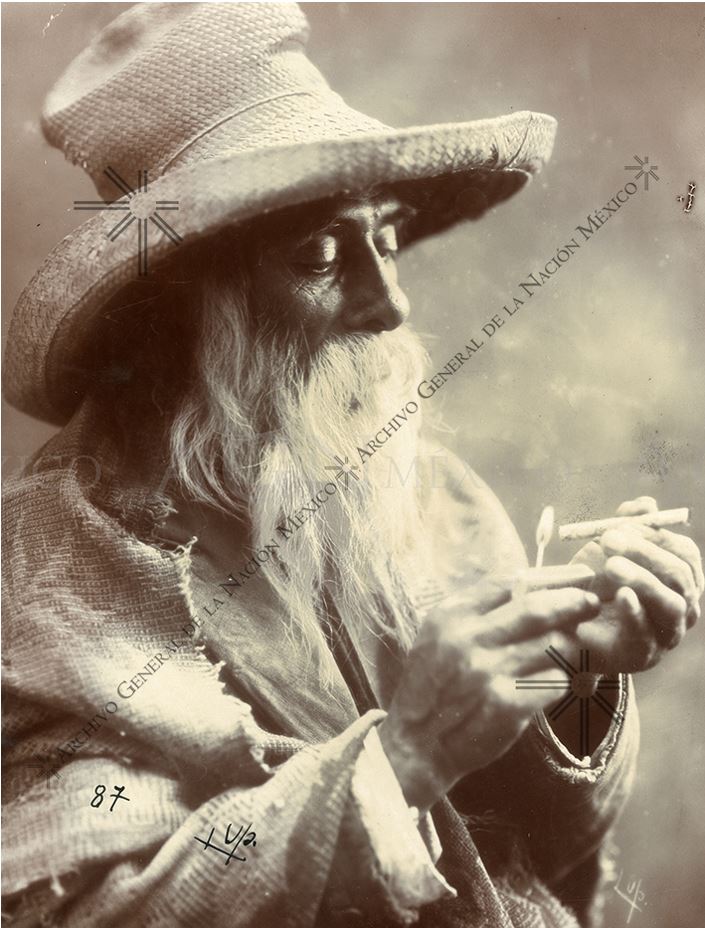
The origin of cigar advertising came about as a result of the industrialization process that tobacco production underwent in the mid-19th century. Until that time, its cultivation, production, and sale were under the control of the State, which sometimes resorted to the purchase of private crops and on other occasions rented the fields to private producers.
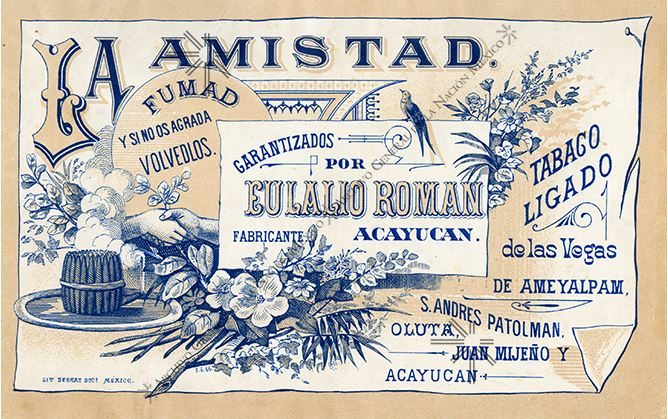
Under these three modes of production, it was very difficult to sustain the tobacco industry due to the political and economic instability that the country was undergoing as it was building towards the consolidation of a sovereign State. This was reflected in the shortcomings of this industry in terms of poor product quality. These reasons led the government to declare the free planting and manufacture of tobacco in February 1856.
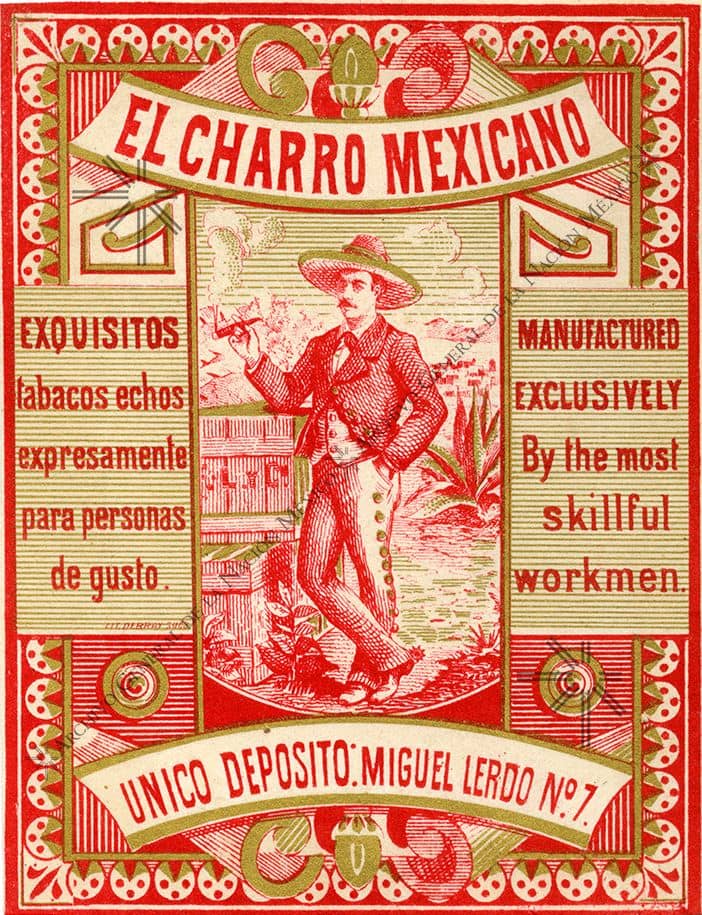
The liberation of tobacco was the watershed for advertising in the industry to play a fundamental role. The commercial competition was unleashed among private producers to distinguish their products and captivate consumers through an image that would show the prestige of the brand's consumption or the popularization of cigar shops. This was done primarily through advertisements in newspapers and magazines of the time, as well as posters and public events in the city's busy streets.
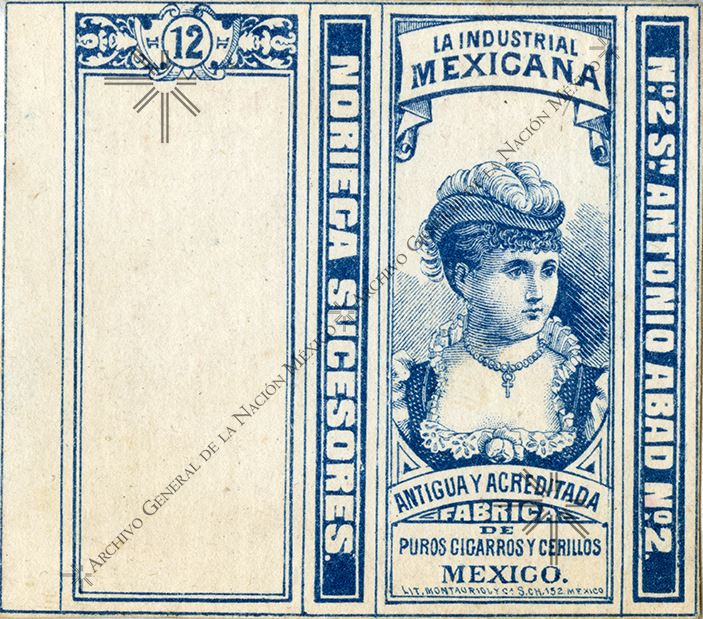
By the end of the 19th century, the entire tobacco industry in the country was dedicated to the manufacture of cigarettes and generated massive consumption. At that time, as there was already a wide variety of cigarette brands, greater importance began to be given to labeling, decorating cigarette packs with personalized messages and images to attract consumers' attention.
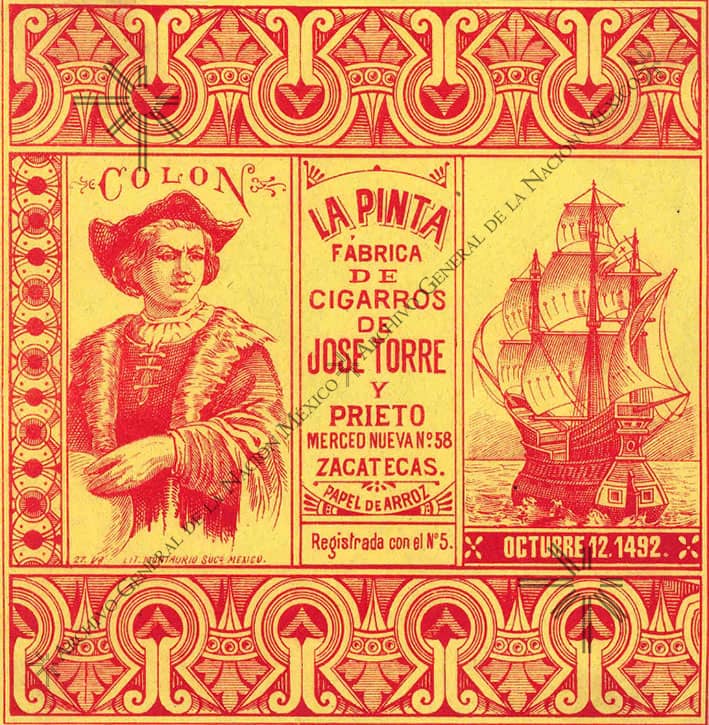
This new advertising development through labels meant that printing by lithographic workshops took on a fundamental role in highlighting the quality of the product and the distinction of the brand. The labels provided basic product information such as the manufacturer's name, packing date, and place of manufacture. They also included messages encouraging the purchase of the product, promising better quality than other brands.
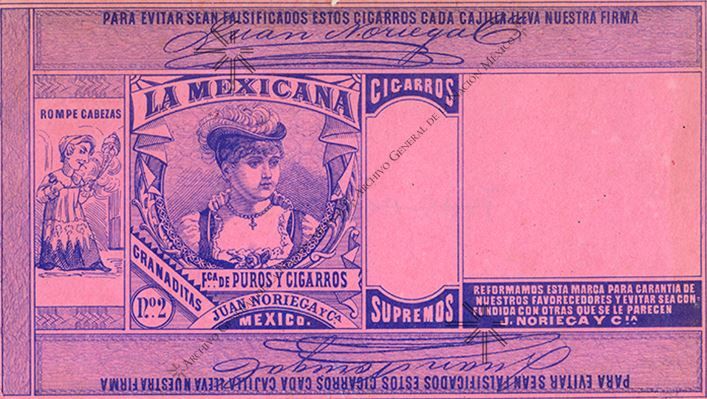
Even brands such as La Tabacalera Mexicana and El Buen Tono faced an arduous rivalry through their advertising competition, including advertisements in newspapers, as paid inserts. The El Buen Tono company even made a series of portraits with popular artists of the time, who posed holding a cigarette in their hands, accompanied by a message written at the bottom of the portrait highlighting the quality of the cigarette.
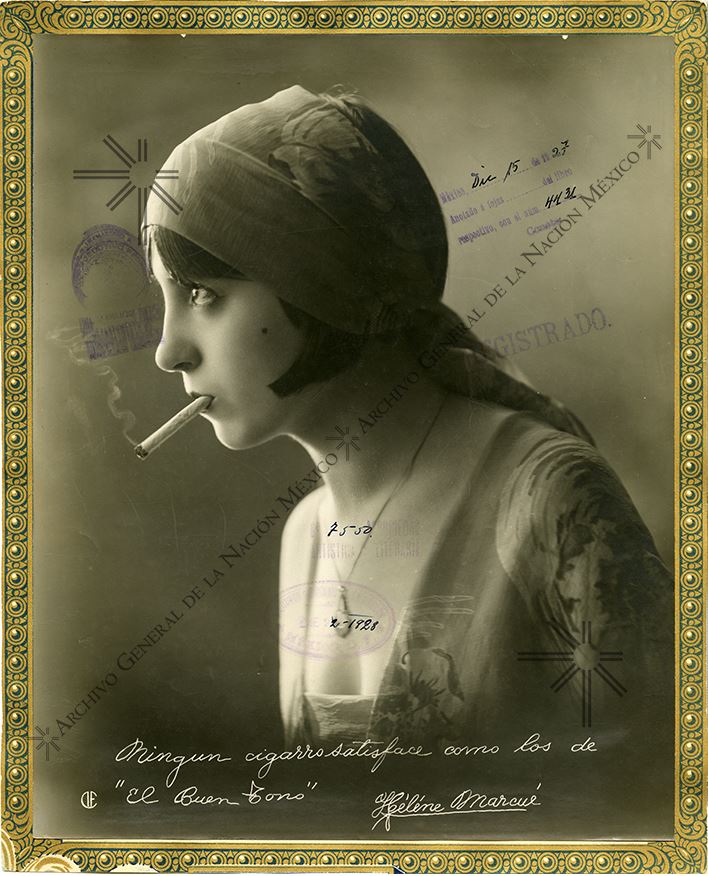
Cigar advertising was able to impose itself through its ads because, in the mid-19th and early 20th centuries, cigar consumption was not regulated, much less condemned, either by age or gender. Because of this situation, there was no social convention or norm that prevented it, having as an objective to bequeath to men, women, old people, and children, enlightened or illiterate.
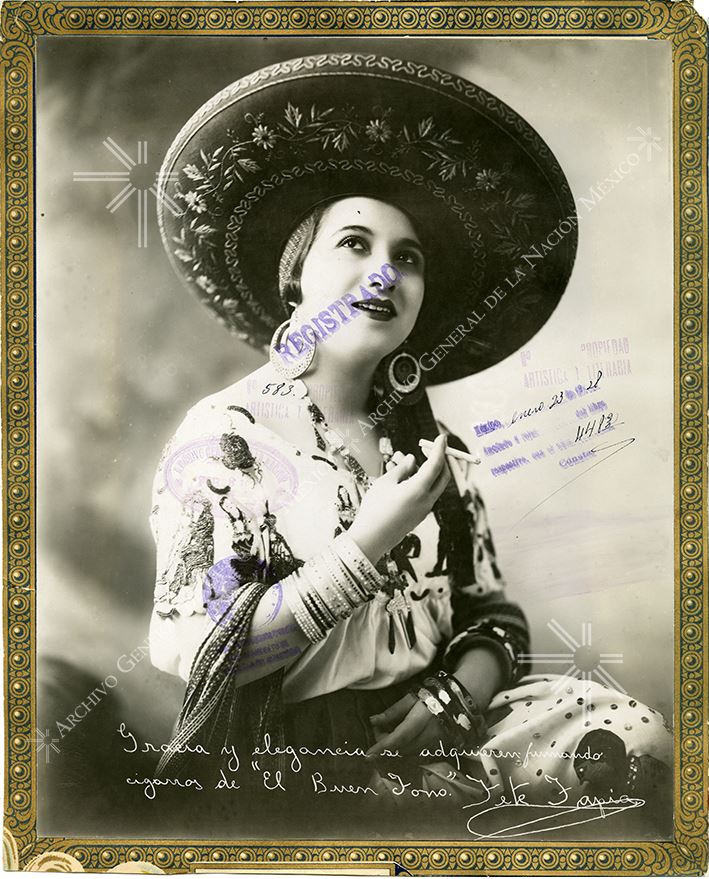
The graphic collections Felipe Teixidor and Propiedad Artística y Literaria keep the faithful testimony of the advertising principles of the cigar industry in Mexico in the Archivo General de la Nación and allow us to take a look at the strategies of industrial production of cigarettes as merchandise, but also of the creation of consumption through advertising strategies.
